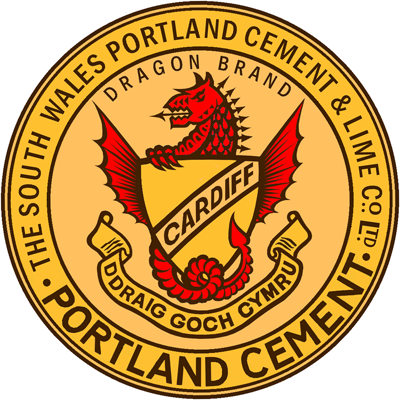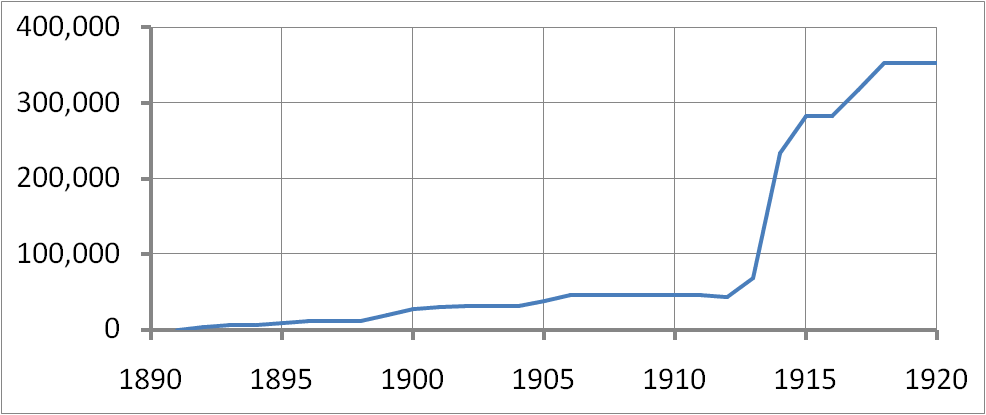The following article appeared in the Western Mail (9/9/1889, p 34) and the Barry Dock News (13/9/1889, p 4) It proclaims the merits of the new process (the rotary kiln). The new process was patented (by Ransome) and its key element - the kiln - is not mentioned. In fact, other newspaper articles suggest that the locally-recruited workforce were kept entirely in the dark as to what was being attempted. The process was introduced, as at Mitcheldean and Barnstone, on a plant which was a new entrant to the industry, lacking any relevant expertise, and like those two plants, a dry process was employed. The motive power for the plant, and the heat for the kiln, were supplied by producer gas. The near-impossibilty of heating a kiln with producer gas ensured the failure of this and all the other Ransome kilns, although the article suggests it had been successful. By contrast, the 1895 article, with six years' hindsight, dismisses the whole project in half a sentence as an expensive failure. Knowledge of the way cement industry capital projects are vindicated teaches that at least six years' hindsight are needed before the claims of success can be seen for what they were.
SUPERLATIVE MERITS OF ABERTHAW LIMESTONE - THE CEMENT WORKS AT PENARTH
The importance of the works established by the South Wales Portland Cement and Lime Company, about half-way between Cardiff and Barry, does not seem to be generally known. The works are situated on the far-famed Aberthaw Lias beds (Note 1), which produce the best lime in England, and were erected for the purpose of making experiments on a large scale in the manufacture of Portland cement by a new process. We are informed that the experiments have proved to be in every respect successful. What has hitherto taken ten days from the quarrying of the stone to the production of the finished article has been done at these works in ten hours, the burning taking only one hour. It is also claimed by the company that the cement manufactured by the new process is superior to that produced by means of the old system. The cement can also be made according to the requirements of engineers—either for quick or slow setting—and is perfectly regular, being neither over- nor under-burnt. The plant will turn out about 200 tons weekly (Note 2), but that output could be easily doubled should the necessity arise (Note 3). The machinery has been purchased regardless of cost, and is, therefore, of the very best description. A powerful engine, 30 ft long, is being fixed, and will be fired with gas, which will do away with the trouble and expense of stoking (Note 4). A novelty in the shape of patent pulverising machines by Messrs. Pope Brothers, Bristol, is introduced. The drying fires have been laid down on the most approved principles, and economy in fuel is observed throughout the works. Two powerful gas generators by Mr B. H. Thwaite, Liverpool, supply the motive power, and work well. The experiments commenced last January, and have been carried on up to the present time. The tests which have been applied show that in seven days the cement will bear a pressure of 500 to 600 pounds to the square inch, and in eleven days it has borne a pressure of over 700 lbs. (Note 5)
The principal in the firm is Mr William Llewellyn Morcom, of Manchester and Penarth, and Mr Kilby, the manager, has now been taken into partnership.
On Saturday afternoon last, about 50 men employed at the works named dined together at the Ship Hotel, Penarth, and the chairman (Mr Morcom), in responding to the toast of his health, said that in all businesses time was money, and as this company could make clinker in the short space of one hour, which took a week to make by the old fashioned kiln system, and even longer than that by London and Kent manufacturers (Note 6), they might consider that they had taken the first step in revolutionising the whole trade of the world. Practical engineers would not be slow in recognising that, as the cement which this company would manufacture would be free from all admixture, it would go farther than ordinary kinds in the making of concrete. As they were aware, kilns built with alternate layers of stone and coke must, during the process of clinkering or fusion, combine a certain proportion of burnt coke with the cement, which had been estimated at no less than 14 per cent. (Note 7) The works at Penarth were the newest of the kind, and he anticipated that in time the output would rival the largest concerns in England. The London expert who had been consulted by the company, and whose opinion he valued more than that of any living man, said they had one fault, and that was that their stuff was too good, and that they were giving too much for the money. That was a fault which their buyers would not find a grievous one.

